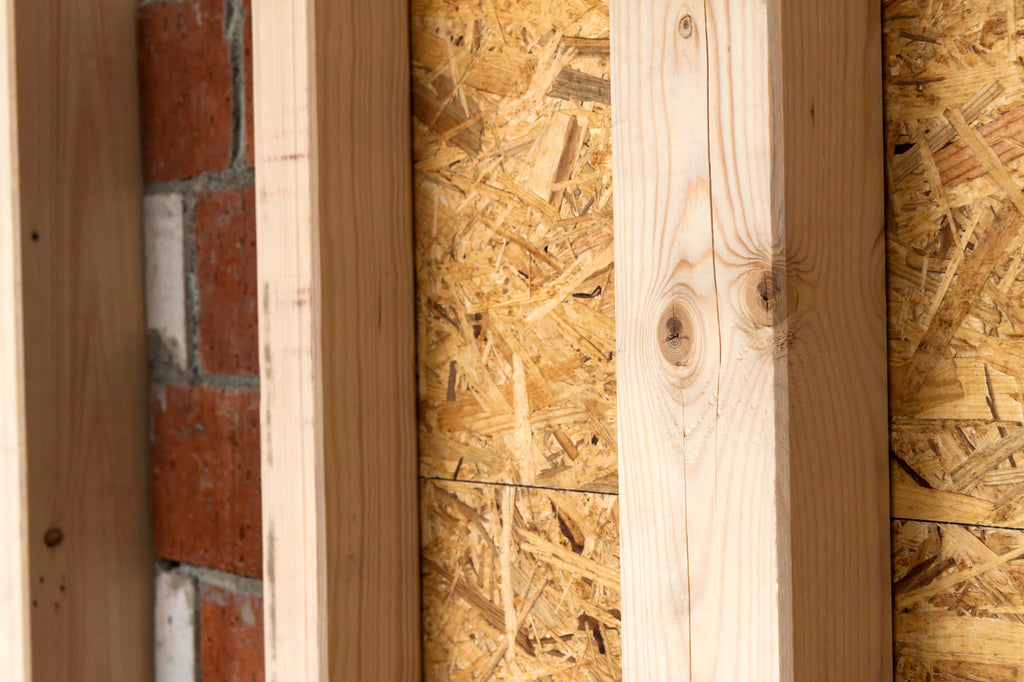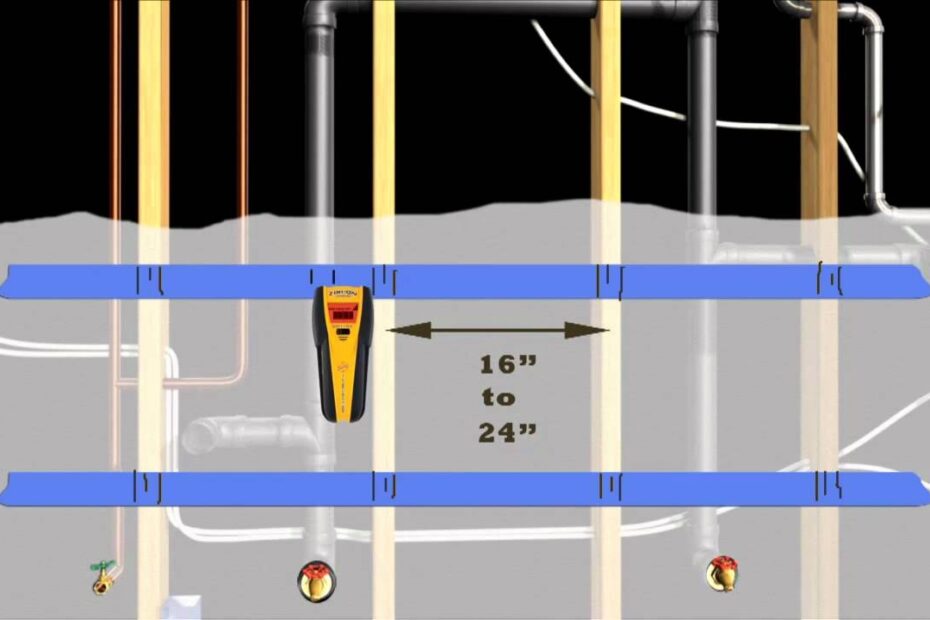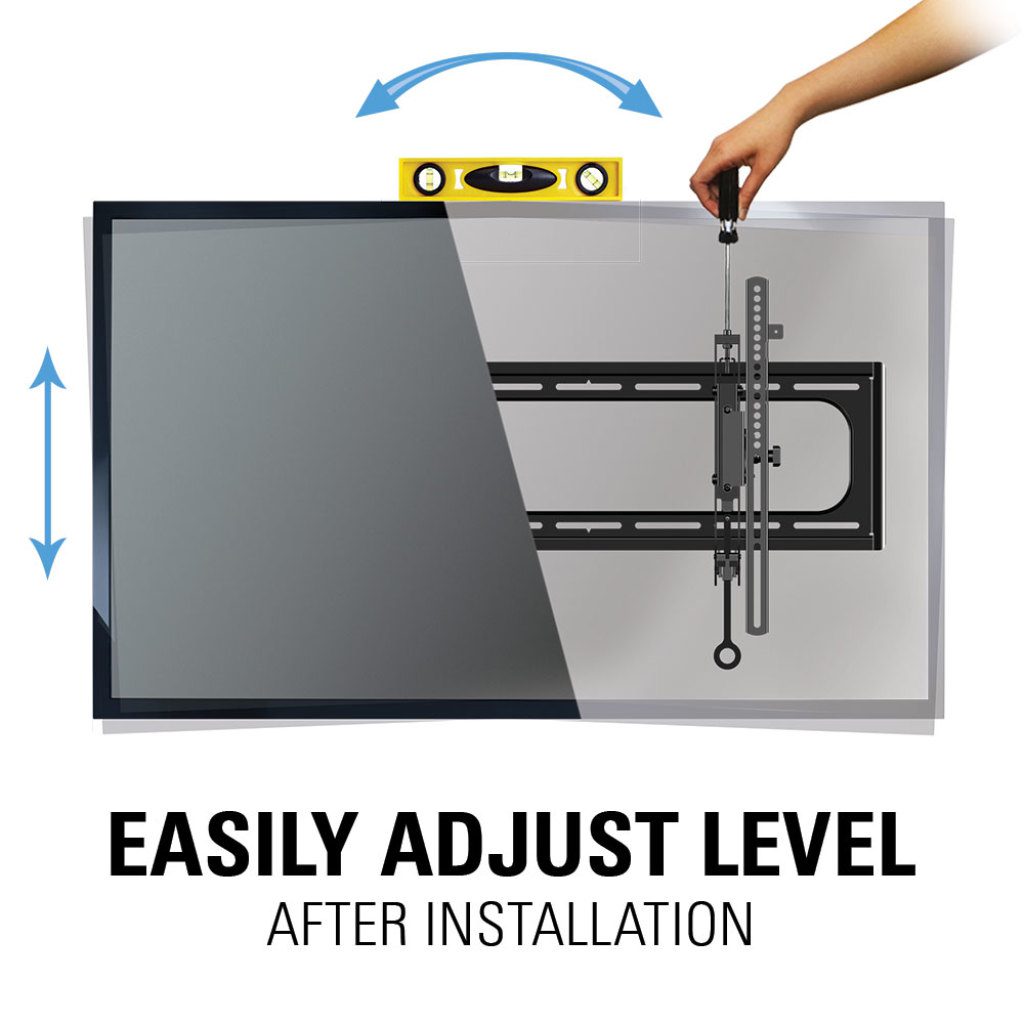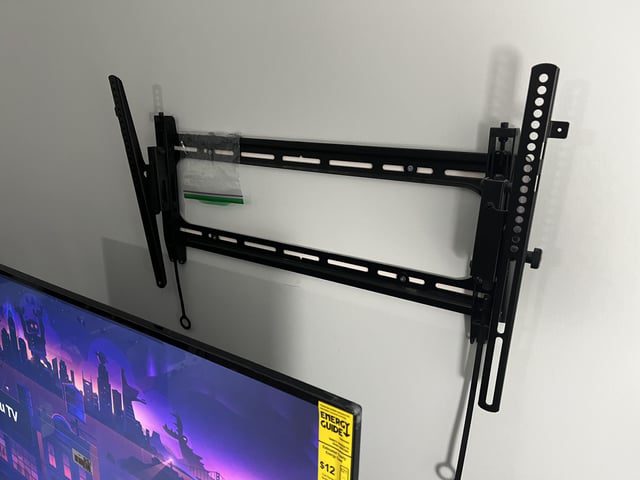To find studs in a wall for TV mount, use a stud finder tool or tap the wall to listen for a solid sound indicating a stud. In addition, look for electrical outlets and switches, as they are often mounted to studs.
Studs are important for securely mounting a TV and preventing it from falling. When mounting a TV, it is crucial to locate and attach the mount to the studs to ensure stability and safety. Failure to do so could result in damage to the wall, the TV, or even injury to individuals in the vicinity.
By following these steps, you can easily find the studs in your wall to safely mount your TV.
Credit: www.audioholics.com
Why Finding Studs Is Important
Finding studs in the wall is essential for securely mounting a TV. Knowing how to locate studs accurately ensures stability and prevents damage to the wall. Avoid the hassle of a falling TV and follow these steps to easily find the studs for a safe and secure installation.
Finding studs in a wall is an essential step when it comes to mounting a TV. It provides the necessary support for the weight of the television, ensuring a safe and secure installation. Failure to locate studs can result in accidents and damage to both your TV and your wall.
Ensuring Safe And Secure Tv Mounting
When mounting a TV, ensuring its safety is paramount. TVs are heavy and can pose a significant risk if not properly secured. By finding studs in the wall, you can attach the TV mount directly to a sturdy structure, preventing any risk of the TV falling or the mount becoming loose over time.
No matter the size of your TV, it is crucial to find the studs for proper support. TVs tend to be top-heavy, so securing them to the wall provides stability, minimizes the risk of accidents, and frees up space in your living area.
Mounting your TV without locating studs can result in costly damages. It may lead to the TV falling and breaking, damaging the screen or internal components. Not to mention the potential harm it can cause to anyone nearby. A secure TV mount ensures peace of mind and allows you to enjoy your favorite shows or movies without worry.
Preventing Damage To Walls
Another essential reason to find studs before mounting a TV is to prevent damage to your walls. Without properly securing the mount to the studs, there is a risk of creating unsightly holes or cracks in the wall.
Using anchors or screws in areas without studs can cause the plaster or drywall to crumble or loosen over time, compromising the structural integrity of the wall. This can lead to a costly repair or renovation work, not only on the wall but potentially on the entire room.
By locating studs and mounting the TV bracket directly to them, you distribute the weight evenly along the wall and minimize the risk of damage. This ensures that your walls remain intact and in good condition even after years of enjoying your mounted TV.
Tools For Finding Studs
IntroductionWhen it comes to mounting a TV on the wall, finding the studs is crucial for proper stability and security. Fortunately, there are a variety of tools available that can help you easily locate the studs in your wall. In this blog post, we will explore three popular methods for finding studs: the stud finder, the magnet method, and the tapping technique.
Stud FinderStud Finder
A stud finder is a handheld device that uses sensors to detect changes in wall density, indicating the presence of studs. It works by emitting a magnetic field or an electronic signal and analyzing the response when it encounters a stud. This tool is both accurate and efficient, making it the go-to choice for many homeowners.
Magnet MethodMagnet Method
The magnet method is a budget-friendly alternative if you don’t have a stud finder on hand. Simply take a small, strong magnet and run it along the wall in a horizontal or vertical pattern. When the magnet is attracted to a spot on the wall, there’s a good chance it has found a nail or screw securing a stud. Mark the spot and continue scanning until you locate multiple points to confirm the stud’s position.
Tapping TechniqueTapping Technique
The tapping technique is another DIY method that involves tapping the wall with a knuckle or a small tool, like a hammer. Begin by tapping lightly across the area, listening for a hollow or solid sound. When you tap on a stud, it will produce a solid sound due to the density of the wood behind the wall. This method requires some practice to differentiate between hollow and solid sounds but can be effective with experience.
Using A Stud Finder
When mounting a TV on the wall, it’s important to find the studs for a secure installation. Using a stud finder is an easy and efficient way to locate the studs in your wall, ensuring a sturdy and safe TV mount.
Finding studs in the wall is crucial when you want to securely mount your TV. One of the easiest and most accurate ways to locate studs is by using a stud finder. These handy tools use different techniques to identify the presence of wooden or metal studs behind the drywall. In this section, we will discuss the process of using a stud finder, starting with choosing the right type of stud finder.
Choosing The Right Type Of Stud Finder
Stud finders come in different types, each with its own features and functionality. To ensure successful stud location, it is essential to choose a stud finder that suits your needs and provides accurate results. Here are a few types of stud finders you can consider:
- Magnetic stud finders: These simple and cost-effective tools use magnets to detect metal fasteners or nails in the studs. They are ideal for detecting metal studs, but not as effective for wooden studs.
- Electric stud finders: These stud finders use sensors to detect changes in density behind the wall. They can accurately locate both wooden and metal studs, making them versatile and reliable.
- Multi-sensor stud finders: These advanced stud finders combine the features of magnetic and electric stud finders, providing users with the most accurate stud detection capability.
Calibrating The Stud Finder
Once you have chosen the right type of stud finder, calibrating it properly is essential for accurate stud detection. Calibration ensures that the stud finder is correctly set to detect studs and minimize false readings. Follow these steps to calibrate your stud finder:
- Read and understand the manufacturer’s instructions for your specific stud finder model.
- Turn on the stud finder and place it against a wall with no studs.
- Press the calibration button or follow the calibration process specified in the instructions.
- Wait for the stud finder to calibrate, usually indicated by a beep or visual cue.
Locating Studs
With a calibrated stud finder in hand, it’s time to locate studs in your wall. Follow these steps to find the studs:
- Start from the corner of the wall and slowly move the stud finder horizontally.
- Pay attention to the stud finder’s indicators, whether it be an LED light, a beep, or a visual display.
- When the stud finder detects a stud, mark the spot with a pencil or tape.
- Continue moving the stud finder along the wall to locate additional studs.
- Repeat the process on different parts of the wall to ensure accuracy.
By using a stud finder and following these steps, you can easily locate the studs in your wall and confidently mount your TV, knowing it’s securely anchored to the sturdy support of the studs.
Using The Magnet Method
When it comes to mounting a TV on the wall, finding the studs is crucial for a secure installation. One method that can help you locate studs without the need for specialized tools is the magnet method.
Selecting A Strong Magnet
The first step in using the magnet method is to select a strong magnet. You want a magnet that is powerful enough to attract to the nails or screws in the stud behind the wall. A neodymium magnet is a good option for this purpose as it has a strong magnetic field.
Moving The Magnet Along The Wall
Once you have your magnet, you can start moving it along the wall. It’s important to move the magnet in a slow and controlled manner, paying close attention to any magnetic pull or attraction. Start from an area where you suspect a stud might be, such as near an electrical outlet, and move the magnet horizontally along the wall.
Moving the magnet in a consistent pattern, such as in a grid or zigzag, can help ensure that you cover the entire wall surface and increase your chances of detecting stud locations.
Identifying Stud Locations
As you move the magnet along the wall, be on the lookout for any areas where the magnet suddenly attracts strongly or sticks to the wall. This indicates the presence of nails or screws in the stud behind the wall, and therefore, the location of a stud.
It’s important to note that not all walls have studs placed at regular intervals. Stud spacing can vary, so don’t be surprised if you find studs closer or farther apart than expected. Always double-check with additional methods, like using a stud finder, to confirm stud locations.
Using the magnet method to find studs in the wall for a TV mount is an accessible and effective approach, especially when you don’t have specialized tools at hand. By selecting a strong magnet, moving it along the wall, and identifying stud locations based on magnetic attraction, you can confidently mount your TV on a secure surface.
Alternative Methods
Looking to mount your TV on the wall? Discover alternative methods to find studs in the wall for a secure TV mounting solution. Easily locate the studs without damaging your wall with these simple techniques.
While using a stud finder is the most common and efficient way to locate studs in a wall for TV mount installation, there are alternative methods that can be used in case you don’t have access to a stud finder or prefer other options. Here are three alternative methods you can try:
Visual Inspection
One way to find studs in a wall is through a visual inspection. Look for visible signs such as seams or nails that indicate the presence of studs. Start by examining the baseboard or crown molding where these materials are normally installed directly to the studs. Take a keen look at the wall for any noticeable irregularities or lines running vertically, these might indicate the presence of studs within the wall.
Another visual clue could be the outlets and switches on the wall. Typically, these are attached directly to the side of a stud, so studying their placement could help you identify the general area where the studs are likely to be found.
However, it’s important to note that visual inspection alone may not be foolproof, especially if the wall has been covered with multiple layers of paint or wallpapers. In such cases, combining visual inspection with other methods can provide more accurate results.
Measuring From Electrical Outlets
If you don’t have a stud finder and prefer a slightly more accurate method, measuring from electrical outlets can be a viable option. Start by locating an electrical outlet on the wall. Once you’ve found one, measure horizontally to the left or right in increments of 16 inches. Most wall studs are typically spaced at 16-inch intervals, although they can sometimes be 24 inches apart. By measuring from an outlet, you can estimate the distance between the studs and mark their likely locations.
It’s worth mentioning that this method assumes that the electrical outlet was installed with the standard practice of being attached to a stud. Sometimes, however, outlets could be attached to horizontal blocking between two studs, so keep that in mind when using this method.
Tapping The Wall
Perhaps the most traditional and rudimentary method of finding studs in a wall is by tapping. This method involves gently tapping the wall with your knuckles or a small hammer and listening for differences in sound. When you tap on an area of the wall where there is no stud, the sound will be hollow or dull. However, when you tap on an area with a stud, the sound will be solid and more resonant. This happens because the stud provides a solid backing for the wall.
While tapping can work well in some cases, it may not be as reliable as other methods, especially if the wall has multiple layers or is made of materials that dampen sound. In addition, caution must be taken not to damage the wall when tapping, particularly if using a hammer.
Remember, these alternative methods are not as foolproof as using a stud finder, but they can be useful when the latter is not available or when you prefer a more hands-on approach. Make sure to exercise caution when using any method and verify the presence of studs through multiple indicators before proceeding with TV mount installation.

Credit: www.youtube.com

Credit: www.mantelmount.com
Frequently Asked Questions Of How To Find Studs In Wall For Tv Mount
How To Find Studs In Wall For Tv Mount Without Stud Finder?
To find studs in a wall without a stud finder, you can use alternative methods such as tapping the wall and listening for a solid sound or looking for electrical outlet boxes that are usually attached to studs. Another tip is to measure 16 inches from a corner, as studs are often placed at regular intervals.
How Do You Find The Studs In A Wall To Hang A Tv?
To find studs in a wall for hanging a TV, use a stud finder tool. Move it across the wall until it beeps or lights up, indicating the presence of a stud. Mark the stud location and use it to determine where to mount your TV securely.
Can I Use My Phone As A Stud Finder?
No, phones cannot be used as stud finders. Stud finders are specialized devices that use magnetic or electronic sensors to detect the presence of studs behind walls. Phones do not have this capability.
Do I Need A Stud Finder To Install A Tv Mount?
Yes, you need a stud finder to install a TV mount. It helps locate the wooden beams behind your wall for a secure mount. Using a stud finder ensures that your TV is supported properly and reduces the risk of damage or falling.
Conclusion
Finding studs in a wall is essential for safely mounting a TV. By following the simple steps mentioned in this blog post, you can easily locate the studs using tools like a stud finder or by tapping on the wall.
Remember, it’s crucial to identify the studs to ensure the TV mount provides proper support. With this knowledge, you can confidently mount your TV and enjoy your favorite shows without any worries! Keep these tips in mind for a hassle-free installation process.
- Unleash the Potential: Exploring the World of Ceiling TV Mounts - February 15, 2024
- How to Mount a Tv on a Swivel Stand - February 15, 2024
- How to Hang Tv Outside - February 14, 2024


